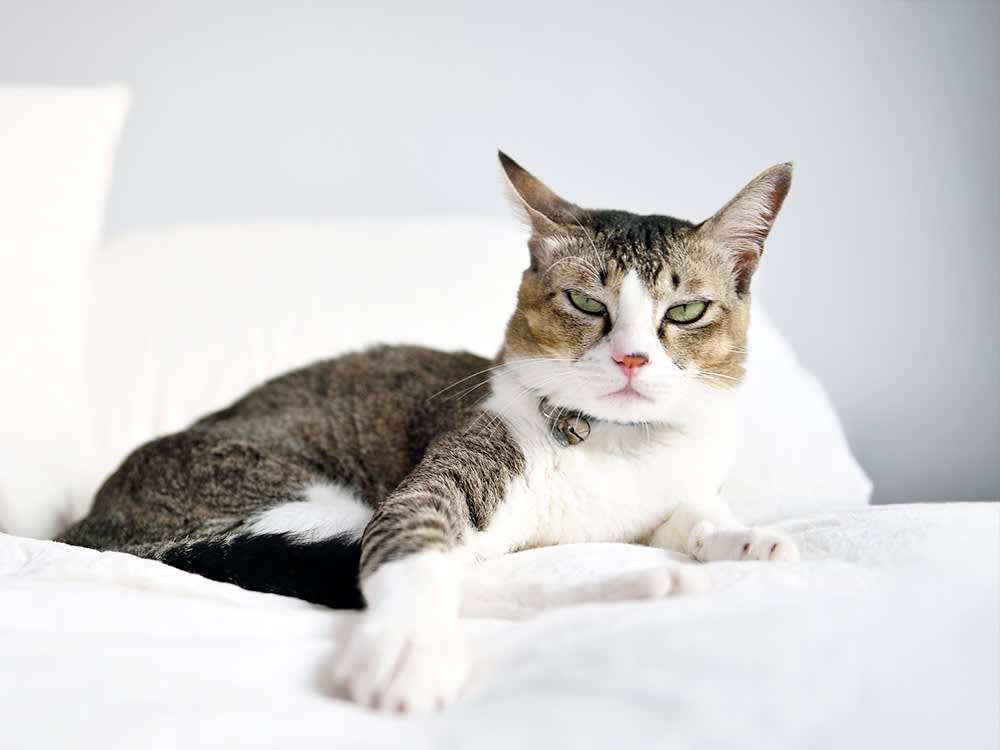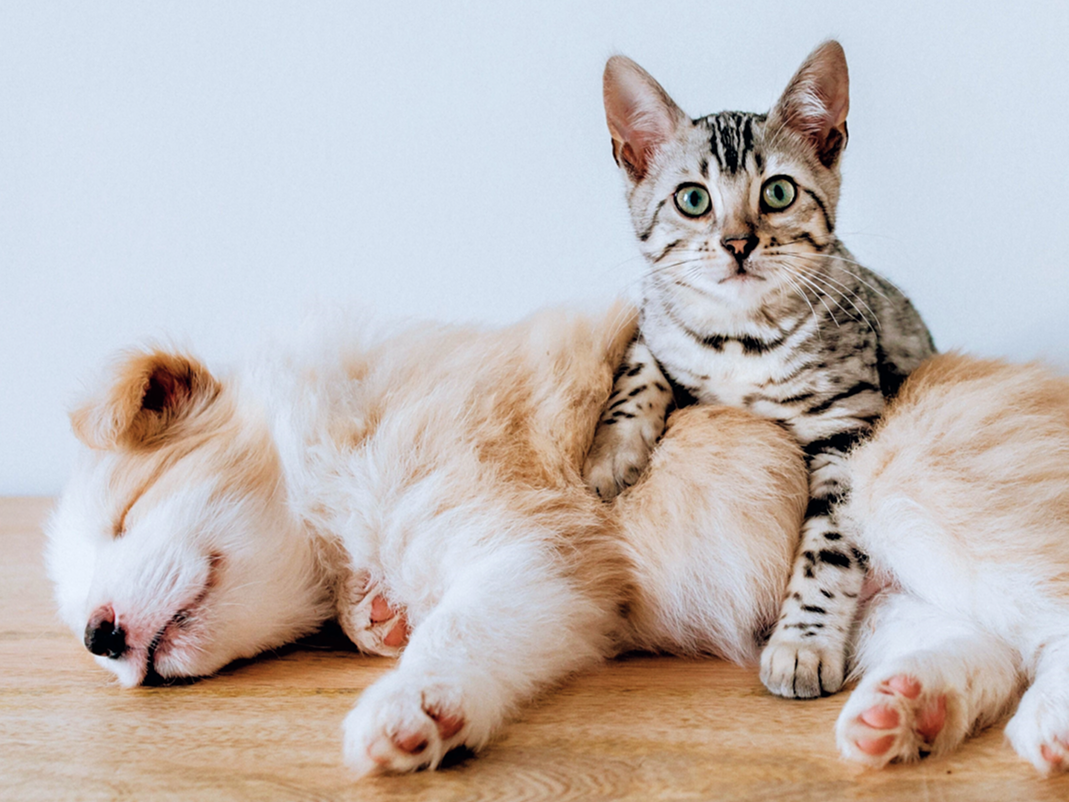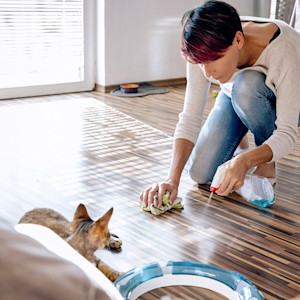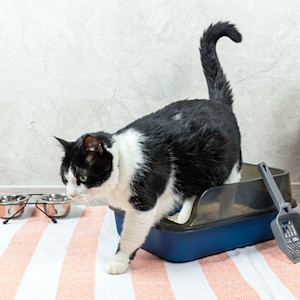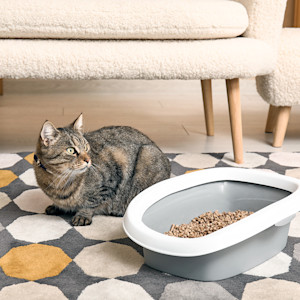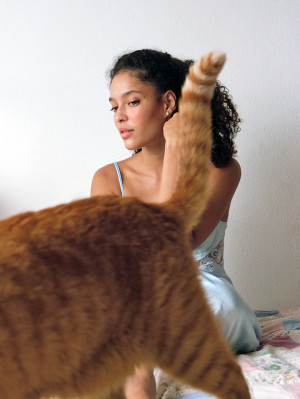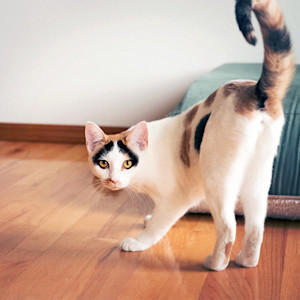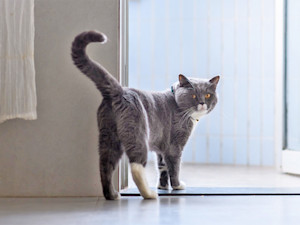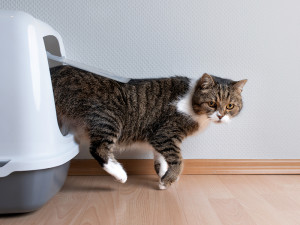Common Urinary Issues in Cats: Symptoms and Treatment
Learn how to help your cat feel better.
In This Article:
Common Symptoms of Urinary Issues In Cats Causes of Urinary Issues In Cats How to Diagnose Urinary Issues In Cats Treatment Options for Urinary Issues In Cats How to Prevent Urinary Issues In Cats
One of the major pros of being a cat parent is the litter box; you don’t need to take your cat outside multiple times a day to go potty. One of the major cons of being a cat parent is also the litter box; it needs to be cleaned frequently and sometimes your cat decides not to use it at all.
Your cat may be boycotting the litter box if they are having a urinary problem. Common urinary issues in cats may show up as frequent urination, bloody urine, peeing outside the litter box, and discomfort when peeing. Consult your vet if your cat is showing any of these signs; you’ll want to get things under control for your cat’s and your household’s sake.
Check out customizable policies from our friends at Lemonade Pet Insurance—so you only pay for what you need.
Common symptoms of urinary issues in cats
If your cat is experiencing a urinary issue, you may notice the following symptoms:
How much do you spend on your pet per year?
Frequent urination: You may notice an uptick in the number of times your cat visits the litter box. The evidence they leave behind will be numerous, low-volume urinary clumps.
Bloody urine: Irritation in the urinary tract may cause a pinkish tinge to your cat’s urine or it may be full-on red with blood clots.
Straining to urinate: Urinary issues can cause irritation and swelling which may make it more difficult for your cat to pass urine. This may look like visiting the litter box without producing anything or your cat may cry out when they try to pee.
Peeing outside the litter box: Some cats will associate the discomfort they’re feeling with the litter box itself and choose to pee somewhere else as a way to avoid more pain. Others will pee where and when they feel the frequent urge.
Licking genitals: When a body part is inflamed and irritated, a cat’s first instinct is to lick it, so you may see your cat paying extra grooming attention to their genital area.
Lethargy: Signs of general illness may be seen with any urinary issue, including lethargy and a decreased appetite.
If you notice any of these symptoms of urinary issues in your cat, contact your veterinarian sooner rather than later as things are best treated early on. What’s more, not all urinary issues are the same, but they can present very similar symptoms, which is a big reason to get your vet involved.
Causes of urinary issues in cats
Although the symptoms of urinary issues in cats may be similar, the causes may be very different.
Feline lower urinary tract disease (FLUTD)
Your vet might throw out this acronym, especially if your kitty is a repeat urinary offender. FLUTD is an umbrella term for a number of different urinary issues that present with similar signs. FLUTD may be caused by any of the following issues.
Urinary tract infections (UTIs)
Similar to the digestive tract, the urinary bladder has its own unique collection of bacteria that help it perform its daily duties. It likes to keep the makeup of this bacterial family just right, so it doesn’t take kindly to outsiders. Bacteria can enter the bladder mainly through the genitals and up the urethra, making females more likely candidates for UTIs because of their short and wider urethra. When outside bacteria get where they shouldn’t, it causes a lot of irritation and an imbalance that causes the classic signs of a UTI.
Bladder stones
Urine is a liquid even though it contains waste products and excess minerals that the body doesn’t need anymore. When these products stay small, they move through the urinary tract as we would hope, but sometimes these products like to band together, creating crystals or stones of varying sizes that not only cause a lot of irritation but can create blockages as well.
Feline idiopathic cystitis
When a cat has urinary issues for no known reason, they’re diagnosed with feline idiopathic cystitis. Kitties older than 10 are more often diagnosed and the condition is usually linked to chronic stress. Conflict with other animals in the house, a nosy neighbor cat, or the loss or addition of a family member are all possible causes of stress.
Underlying health issues
All systems in the body are tied together meaning that something affecting other parts can trickle down to the urinary tract and all other systems. Things like diabetes, hyperthyroidism, and kidney disease may all show up with urinary symptoms. So, also be on the lookout for a change in your cat’s water consumption, appetite, and weight.
Dehydration or poor diet
Diets can alter the pH of the urinary system, the mineral concentration in the urine, and hydration, all of which can make it easier for UTIs and bladder stones to develop.
How to diagnose urinary issues in cats
Recognizing the symptoms of urinary issues in cats is just the beginning. Your veterinarian will want to hear about what you’ve been noticing, and then they will take it from there.
Physical exam
First up will be a physical exam to check your cat’s temperature, listen to their heart and lungs, and feel their abdomen. Some bladder stones can actually be felt from the outside.
Urinalysis
Next, your vet is going to want to get their hands on some of your cat’s urine. A urinalysis will give them an idea if white blood cells are involved, such as in an infection, the pH and concentration of the urine, and many other details that will aid in the diagnosis. They will also get a microscopic look at the urine to check for crystals or other abnormalities.
Blood tests
Depending on the findings from the urinalysis, your vet may request blood work to check on organ function and a blood cell count to assess hydration and many other things.
Imaging tests
Your veterinarian may look at X-rays or ultrasounds to get a visual of the bladder. This helps check for stones, growths, or other abnormalities.
Treatment options for urinary issues in cats
Urinary issue symptoms are similar, but the causes are different, so it would make sense that treatment is going to differ as well. That’s why it’s important that your veterinarian diagnoses and treats your cat. Treatments may include:
Antibiotics for an infection
Dietary changes to help return the urinary environment back to normal and reduce inflammation and crystal and stone formation.
Increased hydration through the use of fluids or by upping a cat’s water intake through the use of cat water fountains or other drinking water tricks.
Surgery may be required to remove some types of urinary stones as well as tumors or other abnormalities.
Stress management through keeping a routine schedule, making changes in their life gradually, and providing plenty of exercise and mental stimulation.
How to prevent urinary issues in cats
Preventing urinary problems in cats typically takes a multimodal approach.
Clean environment
The fewer microbes that are in the environment, the less that can get into your cat’s urinary tract. Frequent litter box scooping and cleaning along with washing bedding and regular grooming are your cat’s best bets for preventing urinary issues.
Vet-approved diet
We get it, there are too many cat foods on the market. It’s overwhelming just thinking about it, let alone picking one out that is deemed to be the best for your cat. So, don’t be afraid to ask your veterinarian. They will be able to recommend a diet that has all of the nutrients your cat needs without all the stuff that they don’t, which can help with their urinary health.
Stress management
Cats may seem like the connoisseurs of comfort, with the ability to fall asleep whenever and wherever they choose, but in truth, some of them are little furry balls of stress. Whether they hide it well or not, reducing any cat’s stress can go a long way in their urinary health as well as their overall health.
Regular veterinary checkups
Perhaps nothing can do more for your cat’s urinary tract than regularly seeing your vet. Not only can they answer any of those nagging questions you’ve had in the back of your mind, but they can get their hands on your cat to catch things before they become big deals.
References
Ackermanopens in new tab, A. Lenore, and Toby C Chaiopens in new tab. “The Bladder is Not Sterile: an Update on the Urinary Microbiome.” Current Bladder Dysfunction Rep. 15 Nov 2019. https://pmc.ncbi.nlm.nih.gov/articles/PMC7328282/#:~:text=Introduction,their%20role%20in%20urologic%20symptomatologyopens in new tab.
“Feline Lower Urinary Tract Disease (FLUTD).” AVMA, https://www.avma.org/resources-tools/pet-owners/petcare/feline-lower-urinary-tract-diseaseopens in new tab.
